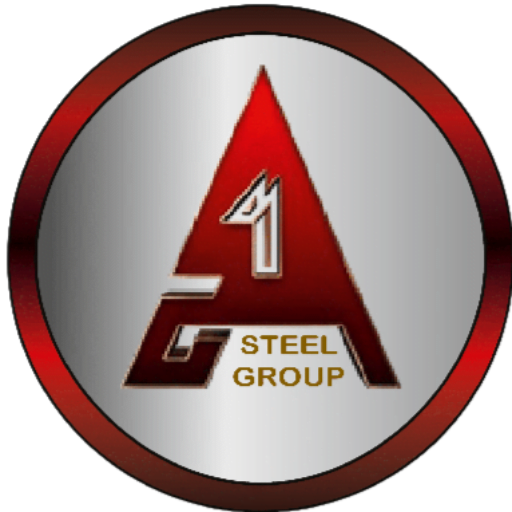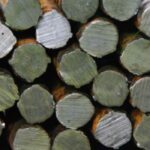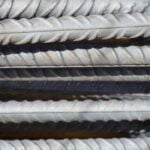Mild Steel (MS), also known as ‘low carbon steel’, is a type of carbon steel with a low amount of carbon content. The amount of carbon ranges from 0.05% to 0.25% by weight although these ranges vary according to different sources.Mild Steel is not an alloy of steel and hence, does not contain large amounts of other elements besides iron, so there are very small traces of chromium, molybdenum or other alloying elements. There are several properties of mild steel that differentiate it from higher carbon and alloy steels, owing to its relatively low content of carbon and alloying elements.
Low amount of carbon makes mild steel typically more ductile, machinable, and weldable than higher carbon and other steels. Though, on the other hand, because of the low amount of carbon, mild steel is almost impossible to harden and strengthen through heating and quenching processes. Owing to the low amount of carbon in mild steel, it has very little carbon and other alloying elements to block dislocations in its crystal structure, thus, making it less tensile than higher carbon and other steels. Also, due to the comparatively higher amount of iron and ferrite, mild steel is magnetic in nature.
The low amount of alloying elements in mild steel also makes it susceptible to oxidation (rust) if not properly coated. But this low amount of alloying elements also makes mild steel relatively affordable as compared to other steels. These properties of affordability, weldability, and machinability make mild steel a popular choice for customers.
The process of making mild steel is very much similar to how other carbon steels are made. The most common method of accomplishing this is combining iron ore and coal, which are melted together in a blast furnace, once they are extracted from the earth. After melting iron ore and coal together, the mixture is transferred to another furnace to remove any impurities that the mixture might contain, and also to make other adjustments to the chemical composition of Mild Steel. After removing the impurities, the steel is solidified into a rectangular shape, and subsequently, this slab of steel is usually reduced to its desired shape using processes like hot rolling or cold drawing.
Mild Steel pipes are used for the supply of water i.e. plumbing, firefighting and HVAC (Heating, Ventilation, and Air Conditioning). Furthermore, these pipes are perfect to use in several industrial as well as engineering applications. MS pipes are coated with paint, varnish, or other metals that help not only to protect them from rusting, but also to make them long-lasting and work under critical conditions.
The different types of MS Structural Steel and their various uses are as follows:
- Tee: The tee beam, also referred to as the T-beam, finds its most extensive use in load-bearing purposes. Due to its T-shaped cross-section, it allows for a large amount of load to be carried appropriately.
- Channel: Channel beams, also known as C-beams, are created with top and bottom flanges that form a C-shape. C-beams have enjoyed the most amount of usage in building bridges over the years. Nowadays, C-beams are starting to be used extensively for a wide range of building applications, including and not just limited to building marine piers.
- Bearing Pile: Construction professionals and engineers strive to find the best possible methods to use and design. The bearing tiles are designed to create a deep foundation system, and these beams are used by builders to create foundations in areas containing dense soil and for projects that require tons of weight to be handled at once.
- Angle: These type of beams, also known as L-shaped beams, are best utilized in-floor systems with building foundations. These beams, because of their L-shaped design, provides the required stability for floor systems while reducing structural depth, simultaneously making them very popular with builders and constructions workers.
- I-beam: I-beams, also sometimes known as H-beams, are beams with I or H shaped cross-sections. The horizontal elements of the “I” are known as flanges while the vertical elements of the “I” are known as webs, and are hence known as universal beams because of these two elements. The webs resist the shear forces, while the flanges resist most of the bending moment experienced by the beam.
- Pipe: Basic structural steel pipes find a lot of use in construction work, typically, in gas, oil, and water projects. Due to their hollow cylindrical shape, they are best suited for the latter projects than other beams for this particular use.
- Hollow Steel Section (HSS): These type of beams comes in a variety of shapes – circular, rectangular, square, or elliptical. Because of these diverse ranges of shapes, builders are able to use these types of beams for projects that require loading in a variety of directions.



